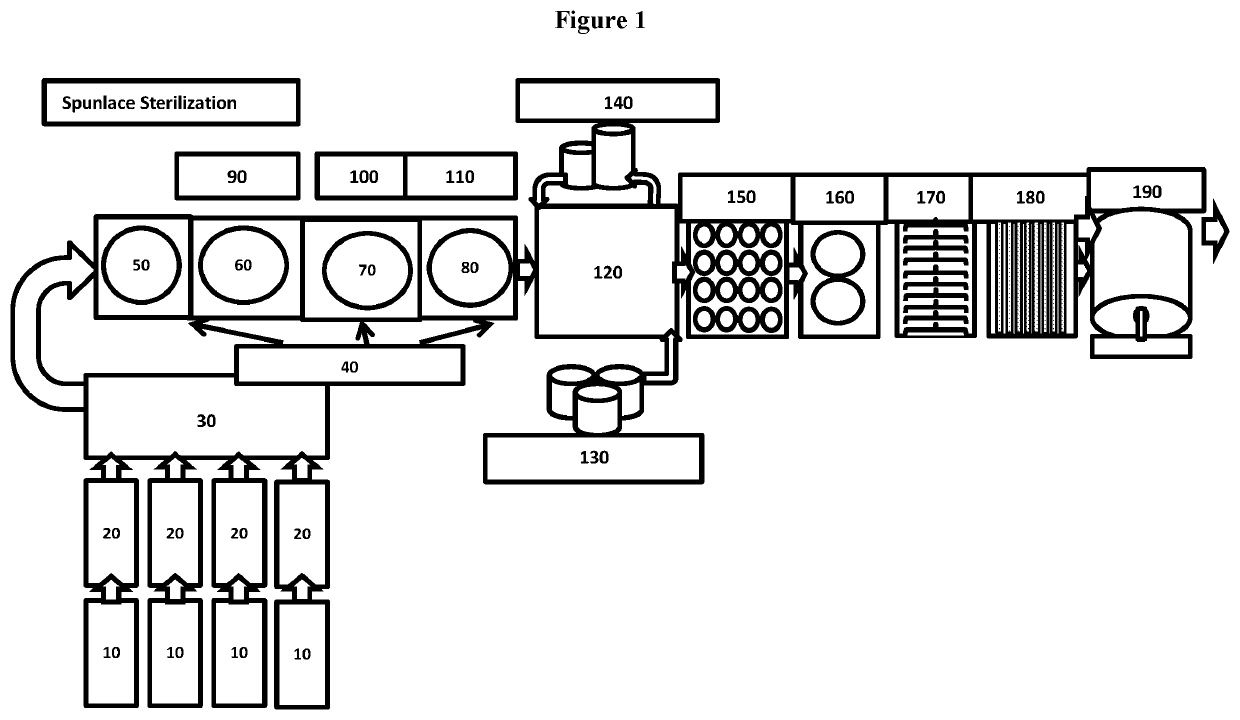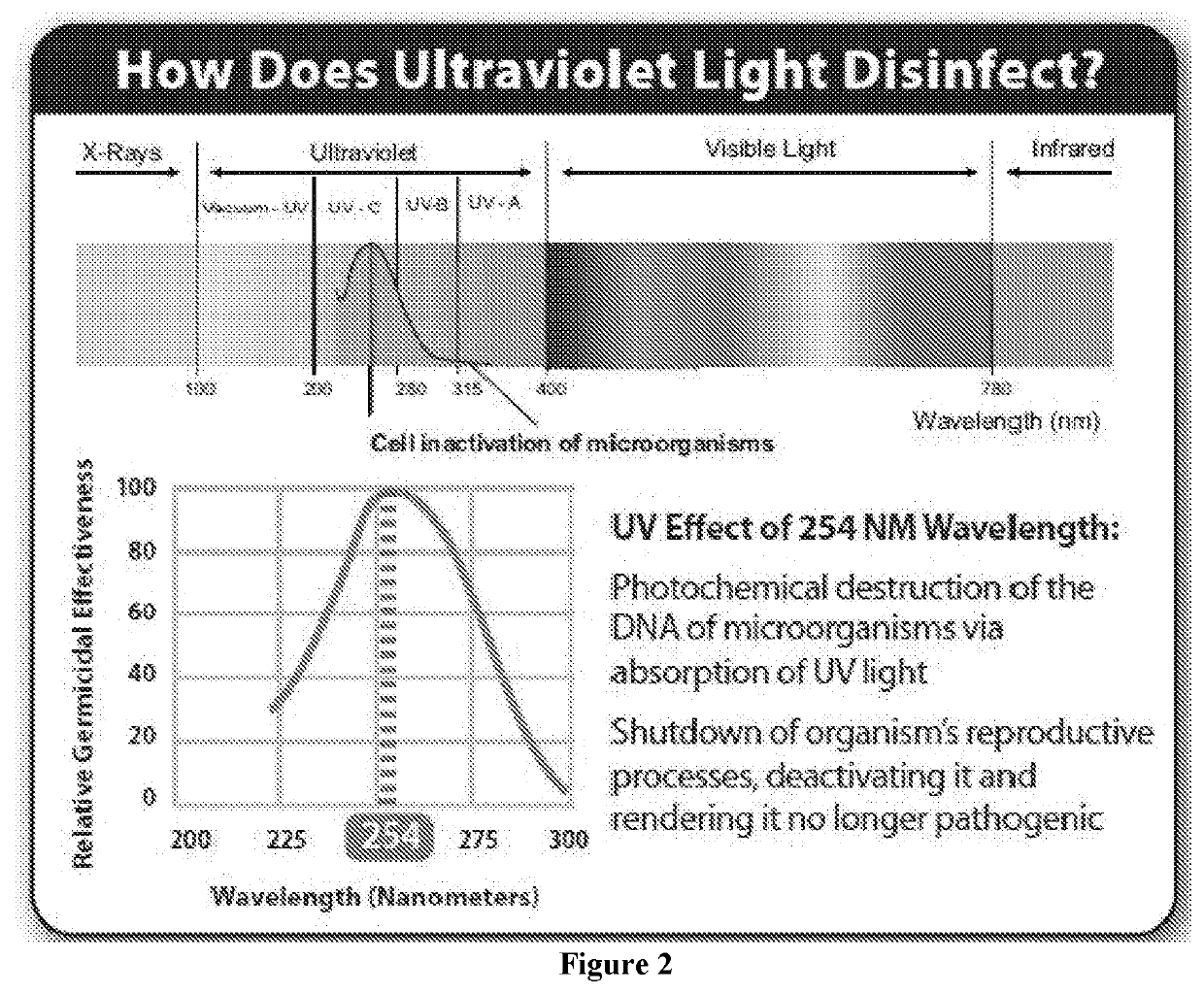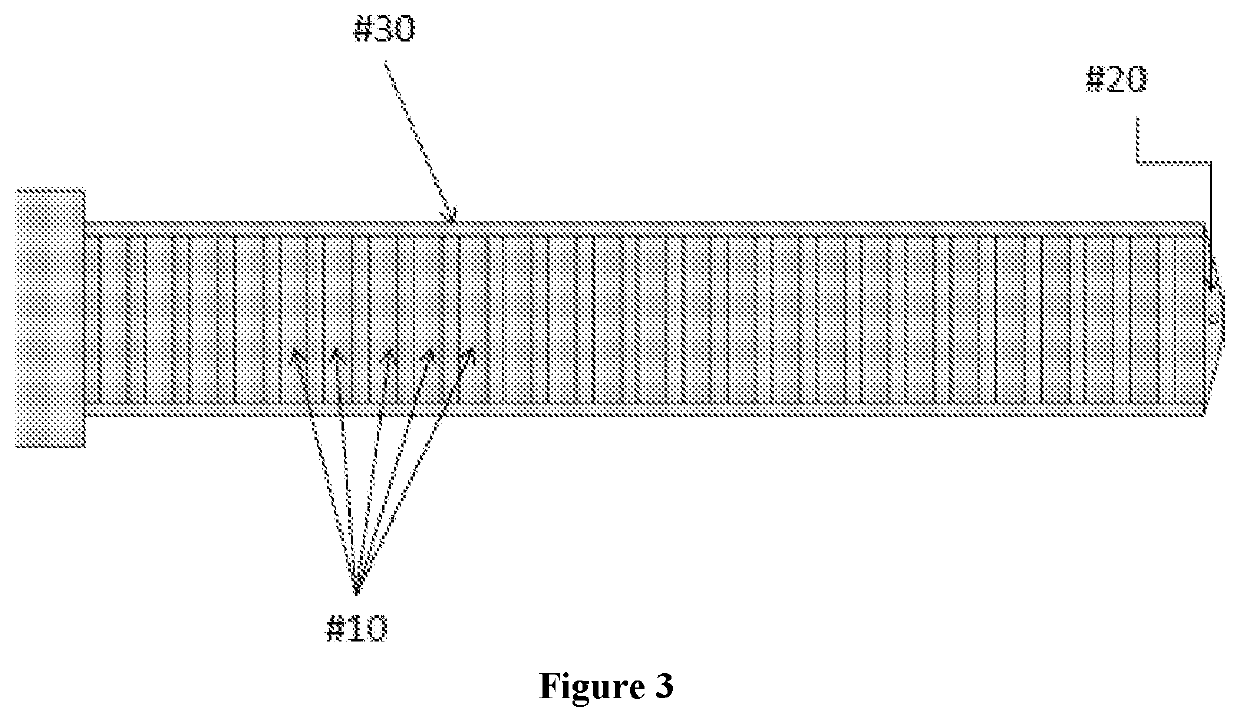Process for providing antimicrobial treatment to non-woven fabrics
a non-woven fabric and antimicrobial technology, applied in the field of providing antimicrobial treatment to non-woven fabrics, can solve the problems that the technology for manufacturing higher quality materials from waste generally has not developed significantly, and achieves the effects of reducing the risk of infection, and increasing the antimicrobial activity
- Summary
- Abstract
- Description
- Claims
- Application Information
AI Technical Summary
Benefits of technology
Problems solved by technology
Method used
Image
Examples
example 1
Processing Flow
[0220]An example of one embodiment of how materials can flow throughout the process described herein is shown in FIG. 1.
[0221]To start the process, baled fiber-based materials can be fed, for example, via a robotic loader, from a series of bales (10) into a blend line (20), and then conveyed to a blend line storage box (30), where the fibers can be intimately blended.
[0222]The blended fibers are conveyed, using a web conveying system (40) to an airlaid card (50), and then to a first non-woven card (60), a second non-woven card (70), and a third non-woven card (80), to align the fibers. The web conveying system includes a first web conveyor (90) to convey the material from the airlay card to the first nonwoven card, a second web conveyor (100) to convey the material from the first nonwoven card to the second nonwoven card, and a third web conveyor (110) to convey the material from the second nonwoven card to the third nonwoven card. From there, the material is conveyed...
example 2
of Non-Woven Webs to UV Light
[0225]Non-woven webs with a density of 27 g / ft2 were evaluated in a UV light system, in an effort to identify conditions suitable for decontaminating non-woven webs. The webs were contaminated with a variety of microbes, including E. coli, Staph. aureus, Pseudomonas aeruginosa, Candida albicans, Salmonella enteritidis, Bacillus subtilis, and Aspergillus niger spores.
[0226]As shown in FIG. 2, UV light, particularly light in the UV-C range, is known to have antimicrobial properties. However, it is also known to damage textiles and fibers when the intensity of the light is too high.
[0227]In an effort to obtain an antimicrobial effect without damaging the non-woven materials that were being evaluated, the UV lights were set a certain distance, namely, one foot, from the materials. However, satisfactory results are generally obtained when the distance is between about 6 inches to about 2 feet from the non-woven materials, or fibers, to be treated.
[0228]A medi...
example 3
ative UV Sterilization Chamber
[0231]As illustrated in the accompanying drawings, the present invention also provides an apparatus for implementing the aforementioned method utilizing UV-C for treating fiber and / or non-woven materials. A representative UV-C treatment module (also referred to as a UV sterilization chamber, or sterilization chamber) is shown in FIGS. 3-5.
[0232]FIG. 3 shows a top view of a UV-C treatment module. A conveyor belt (not shown) moves fibers and / or non-woven materials through the module. UV lights (10) are present throughout the module, and a suction hood (20) is located at the end of the module where the fiber and / or non-woven materials exit the module. The UV lights are housed in an enclosure (30).
[0233]FIG. 4 shows a front view of a UV-C treatment module. A conveyor belt (50) passes under UV lights (10) located in an enclosure (30). In this embodiment, a transparent protective layer (40) is present over the lights to prevent contamination of the fibers and...
PUM
| Property | Measurement | Unit |
|---|---|---|
| wavelength | aaaaa | aaaaa |
| wavelength | aaaaa | aaaaa |
| diameter | aaaaa | aaaaa |
Abstract
Description
Claims
Application Information
 Login to View More
Login to View More - R&D
- Intellectual Property
- Life Sciences
- Materials
- Tech Scout
- Unparalleled Data Quality
- Higher Quality Content
- 60% Fewer Hallucinations
Browse by: Latest US Patents, China's latest patents, Technical Efficacy Thesaurus, Application Domain, Technology Topic, Popular Technical Reports.
© 2025 PatSnap. All rights reserved.Legal|Privacy policy|Modern Slavery Act Transparency Statement|Sitemap|About US| Contact US: help@patsnap.com



